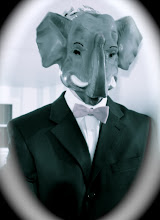
A knife can be your best friend or your worst enemy. If you treat the knife with respect it will be your best friend for life. Your BFF. Your bosom buddy. Your sidekick. Your soul sister. Your brochacho. The only thing that won't leave you when the world is cold and gray...Might have gotten a little off track there. However, if you do not treat the knife with respect it will ruin you. It will knock-up your wife and your daughter. It will shiv you in the shower. It will take your Grandmother out for a nice steak dinner and then never call her again. It will make you train your replacement at your very recently former job... Moving on.
 So here is you new friend. Not so scary right? Let us take a closer look. This is a Santouko knife, which is sometimes referred to as an Asian Chef's knife. This is the main knife used in the Workshop, as it is the most comfortable for the Cooker. This is a personal preference type of thing.
So here is you new friend. Not so scary right? Let us take a closer look. This is a Santouko knife, which is sometimes referred to as an Asian Chef's knife. This is the main knife used in the Workshop, as it is the most comfortable for the Cooker. This is a personal preference type of thing.
The image above is a diagram of the various key points of a knife. If you would like a more detailed description of each part let the Workshop know.

Here you have the handle. Most knife handles come in maybe 4 different materials, metal, plastic, rubber and wood. There are of course plusses and minusses to each one and it will depend ultimately on which one feels the most comfortable in your hand. Here are some things to consider for each material.
The metal handles are typically one piece with knife itself. The Workshop has found these knives to be slippery when wet, which is a little scary sometimes. Here is an example of a metal handled knife. The benfit to a knife like that though is that you will never have to worry about the handle coming loose or getting broken or cracked.
The plastic handled knives are by far the most common. The benefit is that they can be molded into ergonomic designs for ease of use. The downside is that they can crack, chip and actually break off if you really jack it up. Here is an example of a plastic handled knife.
The rubber handled knives are a relatively recent development and are mainly used by professional cooks to ease the hand strain from chopping stuff for hours everyday. The good part is that they are very comfortable to hold and use. The bad part is that they get pretty nasty looking after a little while and can get rubbed down. Here is an example of a rubber handled knife.
The wood handle looks the best in the opinion of this Cooker and has the nicest feel. However, the handle can get discolored easily, warp and generally get nasty looking more quickly than the others if it is not cared for. Here is an example of a wooden handled knife.
No matter what kind of knife you like, make sure that it has what is referred to a full tang. This means that the metal of the knife runs throughout the handle of the knife. This adds better weight distribution and added strength.
 The business end. This is a Santouko shape with a "hollow" edge. The shape will dictate what the knife is good for, in this case veggies. Each knife shape will lend itself to different types of preparations. The most universal is the classic French Chef's knife. Which can be used as a paring knife, carving knife, butchers knife and shell cracker. So if you have just one get a French Chef's knife. The knife in the diagram picture is a French Chef's knife. Long and skinny blades are better for slicing. Short and wide knives are better for chopping and breaking things. Short narrow knives are better for peeling things. Serrated is better for very soft, squishy things and bread.
The business end. This is a Santouko shape with a "hollow" edge. The shape will dictate what the knife is good for, in this case veggies. Each knife shape will lend itself to different types of preparations. The most universal is the classic French Chef's knife. Which can be used as a paring knife, carving knife, butchers knife and shell cracker. So if you have just one get a French Chef's knife. The knife in the diagram picture is a French Chef's knife. Long and skinny blades are better for slicing. Short and wide knives are better for chopping and breaking things. Short narrow knives are better for peeling things. Serrated is better for very soft, squishy things and bread.There are a few different types of metals that this knives are made from. The thing to take note of is the carbon content. The higher the carbon content, the sharper the knife can get but the more often it would need to be sharpened and honed. This will be a personal preference for you. The Workshop prefers a slightly lower carbon knife as it stays sharper longer, but it is up to you.
 The arty shot here is basically a picture of a honing steel. There is a difference between honing and sharpening. Honing is straightening out the edge of the blade and sharpening is creating a new edge. Honing should be doen every time you use the knife to maintain the sharp edge of the knife. Sharpening should only be done when honing no longer brings the edge back. A honing steel straightens out the blade. There are two general types of honing steels: one is called a steel, this realigns the edge; the other is a diamond coated steel which removes metal from the knife, basically sharpening it. Here is a funny gif of honing. Here is a kind of weird video of honing. One thing about the video though, do not do more than about 10 strokes with the honing steel, more than that is unnecessary and will cause your knife to dull more quickly over time.
The arty shot here is basically a picture of a honing steel. There is a difference between honing and sharpening. Honing is straightening out the edge of the blade and sharpening is creating a new edge. Honing should be doen every time you use the knife to maintain the sharp edge of the knife. Sharpening should only be done when honing no longer brings the edge back. A honing steel straightens out the blade. There are two general types of honing steels: one is called a steel, this realigns the edge; the other is a diamond coated steel which removes metal from the knife, basically sharpening it. Here is a funny gif of honing. Here is a kind of weird video of honing. One thing about the video though, do not do more than about 10 strokes with the honing steel, more than that is unnecessary and will cause your knife to dull more quickly over time.A sharp knife is more safe than a dull knife. The Cooker's fingers and knuckles can attest to that. A sharp knife cuts exactly where you tell it to and does not jump through anything unexpectedly. A dull knife requires more effort to cut, jumps like crazy and goes where it wants to. So keep your knife sharp so that you can keep your fingers. Plus, cutting your fingers with a sharp knife feels way better than cutting yourself with a dull knife.
Okay time for the speech about knives that goes to any worker in the Workshop or any of the employees that work for the Cooker at "the Job." You will cut yourself with your knife. It will happen. When is up to you and how much respect you give the knife. If you take care of your knife, keeping it clean and sharp, and keep your fingers out of the way, you will be fine. If you understand and respect the fact that you are holding something that cuts through the skin and bone of formerly living things and understand that you are made of the same stuff, you will be fine.
Hold the knife confidently in your dominant hand. The image above is the catch all way to hold a chef's knife. You can also keep your entire hand on the handle. It all depends on what you are cutting. Holding it as in the image is good for delicate to medium work. Using the whole handle is for heavy work or work that is going to require some grunt and sweat.
Notice that the person in the image has their fingies out of the way of the knife. This is the way a person who respects the knife holds the food to be cut. You will notice that the knife is resting against their knuckles guiding the knife. This is something that takes a little getting used to. The important thing is to make sure that you fingers are curled. Curled fingers = 4 fingers + 1 Thumb. Uncurled fingers = < 4 fingers + 1 Thumb. Oh, and keep that damn thumb out of there.
Does that cover everything? Need more. Let us know in the comments.










Very informative. Seriously, full tang is essential.
ReplyDeleteWonderful post! I love your knife theories, there are so many of them! Or as I like to call them, mini kitchen swords.
ReplyDeleteI also appreciate your strategically-placed links to some of the Workshop Cooker students' blogs. Hooray friend! BOOYA
Good information and tips... but I still don't want to use a knife. Ever. But when I'm forced to, I'll keep this post in mind.
ReplyDeleteI once cut through my fingernail cutting a slippery onion. The cut is still there too, because nails take a long time to grow out.
ReplyDeleteBut if I didn't have nails, I probably would not have a finger tip.
Lesson learned: I'm not 'cut' out to cut onions.haha
Jessica, I am so glad that you too understand the importance of a full tang.
ReplyDeleteNico, sometimes I pretend that they are mini swords and that the veggies are assaulting hordes threatening the well being of my damsel...ha...ha...ha?
Molly, you must have incredibly sharp teeth and horrible table manners if you are never using knives.
J Cola, one time when i was making gumbo i was not practicing good knife etiquette and i cut some finger tips off and then accidentally threw blood all over the kitchen (not at work). The moral of the story though is that I learned to curl my fingers under and not fling my fingers around after cutting them. The gumbo turned out tasty btw.
dear teacher,
ReplyDeletedo knives have uses for other than cooking? i have some things i need to take care of.
thanks for your time,
-N